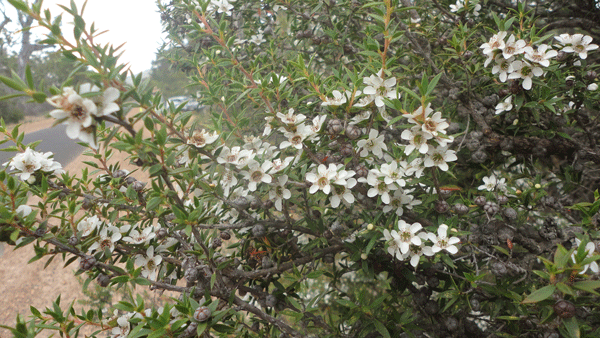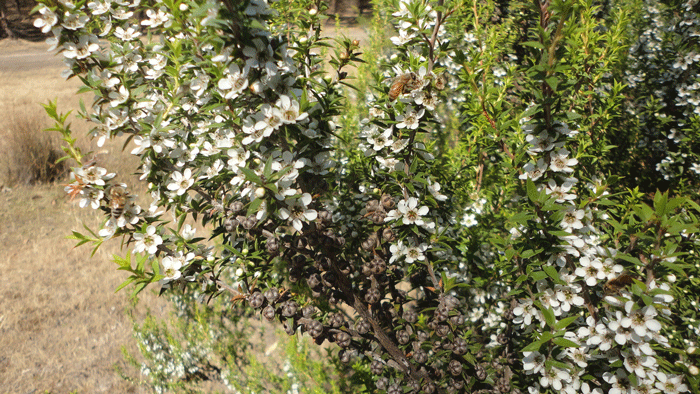
Plantation development in Australia
Discussion
There are some 83 species of Leptospermum with some of those covering an extensive geographic range resulting in the species being described as having many subspecies. (e.g. Leptospermum polygalifolium).
All of the species are unique to Australia with a few species occurring in the islands to the north of Australia and one species (L. scoparium) which is naturalised in New Zealand. In Australia, the Leptospermum genus (represented by 1 or more of the 83 unique species) can be found throughout the country from Cape York Peninsula to the southern tip of Tasmania and from Ballina NSW to the far west near Perth.
Since the therapeutic qualities of manuka honey were discovered in New Zealand by Professor Peter Molan of the University of Waikato in the early 1980s the demand for this product has grown enormously. In Australia, there are over 80 times more species than NZ and a vast range of habitats and geographically diverse regions suited to plantation development.
There wasn’t that much widespread general community interest in bio-active Leptospermum plantation development in Australia before the ABC Landline program in March 2015. But since then the level of interest from the beekeeping and the general farming communities has exploded exponentially. Honey research by tertiary institutions such as the University of the Sunshine Coast and the University of Technology Sydney has been going on for some years and has now accelerated with this increased community interest.
Of the 83 odd species less than half have been tested to determine whether or not their nectar is bio-active and many of those at an elementary almost anecdotal level.
It has been known for some time that some are these species are many times more bio-active than the â manuka (L. scoparium) upon which the New Zealand manuka industry is based. The best known of these include L. polygalifolium, L. liversidgei, L speciosum and L. whitei. The latter three of these species have specific site requirements in particular wet and swampy conditions.
L. polygalifolium (jelly bush) has 5 subspecies ranging from altitude in far southern NSW to the Cape York Peninsula.
With such a wide geographical range to which these plants have adapted means (that is subject to provenance selection), they will be able to grow virtually anywhere in the eastern states. The exception is the arid zone, but even then with some irrigation, it would be possible to modify the growing environment to accommodate this species.
L. scoparium occurs naturally in southern Victoria as far west as the Grampians and in Tasmanian in a diverse range of habitats ranging from cold frost-affected areas with altitude to frontline coastal exposure.
This means that this species is highly adaptable and subject to appropriate provenance selection of plant material.
This species has another highly desirable feature. The foliage is highly astringent and also very prickly. Browsing animals such as possums, rabbits, kangaroos and sheep will not eat it once it has established a little. This list deliberately excludes wild pigs, goats, camels and cattle!
The average bio-activity rating (DHA) of Victorian L. scoparium is the same or very similar to that found in the nectar of Tasmanian populations of the species which in turn is the same as that found in wild populations in New Zealand (DHA) around 2,000 ppm).
[DHA or dihydroxyacetone found in the nectar is the precursor for the bioactive component MGO or methylglyoxal found in the honey].
Summary
There is no doubt that some other promising bio-active Leptospermum species will be identified over time with the ongoing nectar sampling, testing and field trials of selected species.
At this stage, the basis for developing plantations will involve the use of either of the two species discussed here, Â depending on the location.
